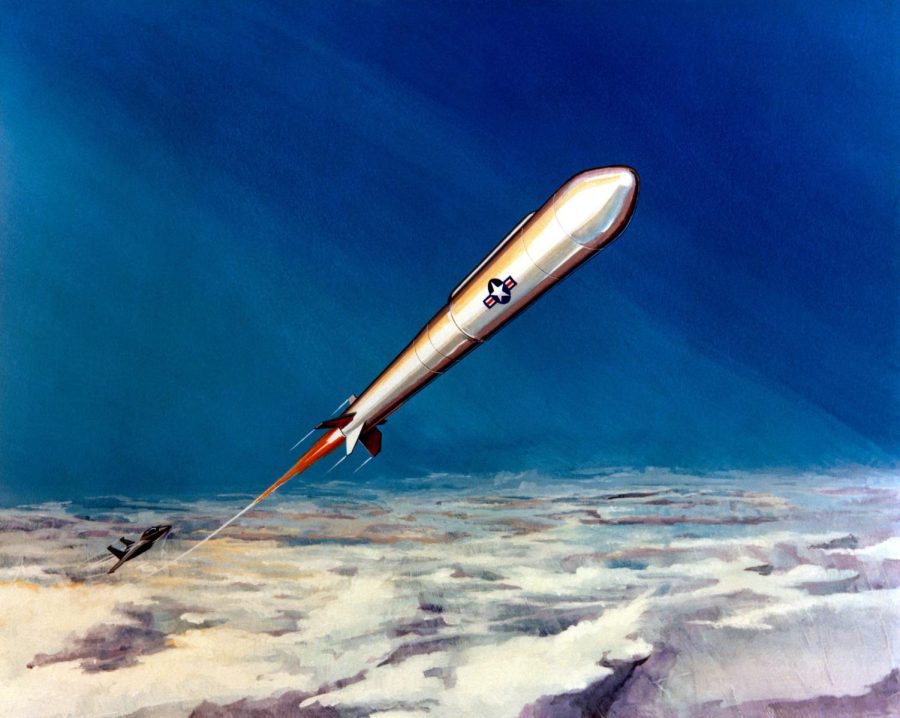What is True Anomaly?
Read about the company’s plan to equip the Space Force with satellites in preparation for future space warfare.
War has moved from land to sea, sea to air, and now it is moving from air to space. And just as in any form of war, we are in the midst of an arms race as tensions of warfare rise in altitude. Currently four countries, the United States, Russia, China, and India, possess and have successfully tested ASATs, or Anti-Satellite Weapons, for destruction of opposing satellites if necessary, and several more have placed military satellites primarily for spying and intel of other nations’ technology into orbit. Many fear war in space to be inevitable. Former Air Force veteran Even “Jolly” Rogers is one of those people. In January 2022, he founded True Anomaly along with Dan Brunski, who worked in national security at Los Alamos National Laboratory. Together with a team of former Air Force, Space Force, and national defense workers, they recently filed an application for special temporary authority with the FCC to use satellites, named Jackals, to pursue and spy on enemy spacecraft. The launch of the first demonstration mission of two Jackal satellites is slated for October, with plans to launch potentially thousands of satellites into space for use by the government.
The goal of space warfare isn’t all out destruction—it’s disruption. Destruction of orbiting satellites could be disastrous for all parties involved and for future, non-military, space travel because of the permanent space debris that is created, shown by the 400 pieces of space debris that were ejected in India’s 2019 test of its ASAT against its own satellite. Instead, countries rely on interference and stalking of other satellites in attempts to learn about or halt other nation’s advancements. Strategies such as interference and the use of satellites for tactical purposes have substantially aided each side in the Russia-Ukraine conflict. Last year, the United States Space Force, a newly created military branch in preparation for space warfare, claimed that Russia had been using signal jammers to block GPS and internet access to Ukraine. SpaceX sent thousands of tiny Starlink satellite dishes to provide internet access to many regions that had lost it during the conflict and to aid strategic decisions. More military uses have been seen outside of open conflict. In 2020 Russia furthered tensions by reportedly sending 2 satellites to synchronize orbits with a US spy satellite, coming as close as 100 miles to it. While Russian intentions still remain unknown, the encounter was nonetheless concerning.
To prepare for future threats, True Anomaly plans on launching their first in-space test in October. This first demonstration mission of the prototype Jackals will be solely between the two satellites as they test their on-board capabilities by ‘chasing’ each other around in orbit. The main purpose of these satellites is the utilization of rendezvous proximity operations (RPO) to acquire and closely pursue other satellites to gather information without engaging in any hostilities, and that currently serves as the only purpose. Rather than any cyber-weapons, the satellites house only several sensors, although this may change. Rogers has mentioned that gathering information is not necessarily enough, and that “active defense” will eventually be necessary, but would involve disruption and cyber warfare rather than ballistics. There has been no mention of whether or not True Anomaly actually plans on arming the satellites.
Even though the satellites are not planned to carry any weapons, their use outside of war for surveillance could have downsides. Kaitlyn Johnson, deputy director of the Aerospace Security Project at the Center for Strategic & International Studies, told Wired that “[the satellites] could cause unintentional escalation. Especially with the founder’s Air Force background, it might be read by our adversaries as a military-directed company that was starting to pursue this capability.”
The Jackal satellites are to be controlled with both AI and human pilots using True Anomaly’s in-development mission planning software, allowing operators to load realistic environments to plan missions and train the satellites to conduct RPOs virtually. True Anomaly hopes to use artificial intelligence both in automation of satellites and to assist human operators. This combination of humans and AI will become increasingly important if True Anomaly does follow through with its far-fetched plan of manufacturing several thousand satellites for use in the new Space Force.
While opinions remain mixed regarding True Anomaly, its October launch should still be an exciting glimpse into the future of space.







